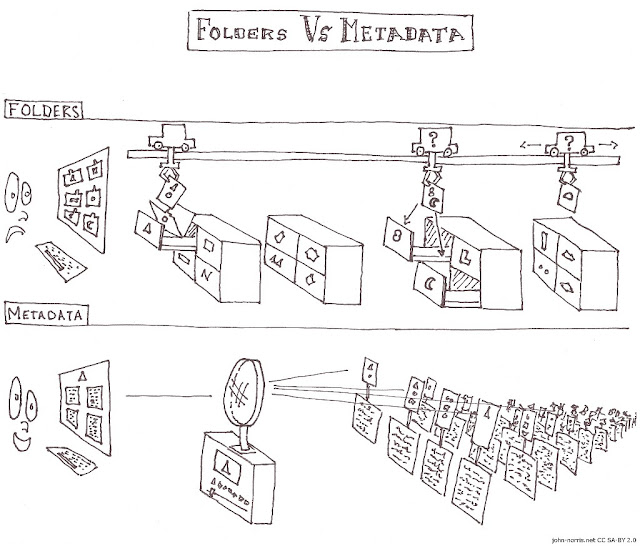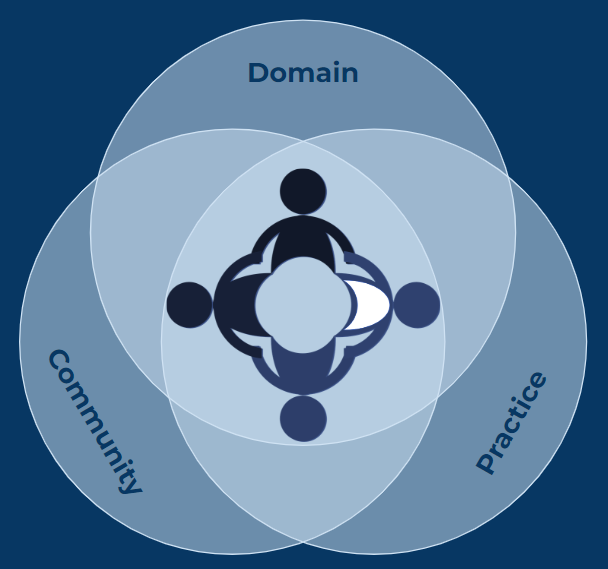Flipped Learning
Flipped learning is a pedagogical approach in which the traditional model of classroom-based learning (students acquire new knowledge and understanding during lessons and then practise independently after the lesson) is "flipped" so that students encounter learning materials prior to attending lessons. The lesson time is then spent on applying and exploring this new learning in amongst peers, with teacher support, and often involving hands-on and interactive activities.
 |
| Flipped Classroom Drawing by Wey-Han Tan, CC BY 4.0 |
In the flipped learning model the acquisition of new learning before the lesson may be achieved by the provision of video lessons, reading, research or discussion tasks, or a multitude of other possibilities all aimed at encouraging and enabling students to engage with content at their own pace in their own time outside of class. Any of these provided resources may - and often does - involve the use of digital tools.
This work before a timetabled lesson frees up in-class time for collaborative work, discussions, and problem-solving activities, all designed to engage students in the content that they have already learnt outside of the classroom. This moves consolidation activities more traditionally set for completion after or between lessons as homework tasks into the facilitated environment.
One of the primary benefits of flipped learning is that it allows students to engage with the content in a way that is more personalised to their needs and learning styles. By giving students the ability to review materials outside of lesson time, they can take the time to fully absorb the material at their own pace. This can be especially beneficial for students who may struggle to keep up (or those who could work at a faster pace) in a traditional classroom setting.
Flipped learning also promotes active learning and student engagement. By using class time for group work and other interactive activities, students can collaborate with their peers and apply what they have learned in real-world scenarios. This approach can help students develop critical thinking skills and better retain information whilst also encouraging learners to take greater responsibility for their own learning.
Flipped learning can also be beneficial for educators. By assigning pre-recorded lectures and other instructional materials, teachers can free up class time for more interactive and engaging activities. This can help educators better assess student understanding and provide more personalised feedback to students.
One of the difficulties with flipped learning is that if a student chooses not to engage with the learning materials before the lesson then the lesson itself may need to revert to a more traditional model for that student, which necessarily takes facilitator time away from other students who have already put the required work in. As with any change a certain amount of re-training (of both students and teaching staff) may be required and the transition may not be a smooth one.
With relevance to digital skills, flipped learning can help educators to better integrate technology into their classrooms: the provision of pre-recorded video lectures and other digital instructional materials opens up opportunities for educators to provide students with a more interactive and engaging learning experience. From the students' point of view, flipped learning allows parallel opportunities to develop important digital skills such as online research, media literacy, and digital collaboration.
Benefits to Heritage Learning provision
There are potential benefits (as well as perils and pitfalls) associated with using flipped learning models as part of heritage education provision: museums and galleries can provide expertise in specific fields and topics, but how many of the activities you deliver do much more than scratching the surface? In many cases it may be that some of the basic knowledge and skills that you spend students' activity time on could be honed independently prior to their visit. You would then be able to spend their valuable facilitated time exploring the subject with greater depth and/or breadth.
Of course, an associated pitfall is the danger that a visiting group does not engage with materials sent prior to their visit, meaning that the students are not where they need to be to get the most out of the experience you have planned for them. Just one reason for this happening is a lack of curriculum time to spend on such pre-visit work at school. One idea for reducing the occurrence of this issue is to offer two versions of an activity: one with pre-visit resources including a commitment to engaging with them on the understanding that their experience on the day will be more valuable as a result. The other version includes the basic prerequisites included in the session time for those who cannot confidently commit to undertaking the offered pre-work, communicating that the student experience will be a little less deep and/or broad than it may otherwise be.
One way to pre-emptively address such issues is to provide training or educational materials for the teachers themselves that explain why you are offering activities using this model and suggesting ways in which they can help their students fit the necessary independent pre-visit learning into their lives. Suggestions on this front include setting reading and research tasks for homework in the lead-up to the visit and setting aside some lesson time for students to present an overview of their findings.
As a final thought, more and more museums, galleries and other heritage sector organisations are providing "pre-visit" materials as part of their learning offer. These materials are designed to get students interacting with stories, objects and exhibitions related to the site before a visit takes place: pre-visit resources are the first step towards flipped learning in the sector.
Next steps:
- Think about a session you offer or a lesson you teach and consider the following questions:
- What would it look like if you "flipped" it?
- Do students need to be taught anything specific in person, all together?
- Is there anything that could potentially be picked up by students before the lesson or activity takes place?
- What would need to be in place for the essentials to be absorbed by them?
- What would you do with gained lesson time if students came to it with the key facts or processes pre-installed?
- Make a list of the pros and cons of adjusting one or more of your learning activities to a "flipped learning" model.
Further reading:
- In the Glossary: Digital Skills | Community of Practice | Blended Learning
- Elsewhere online: Definition of Flipped Learning (FlippedLearning.org) | Flipped Classroom (Wikipedia) | 7 Examples of Flipped Classrooms (Panopto.com)









.png)
Comments
Post a Comment